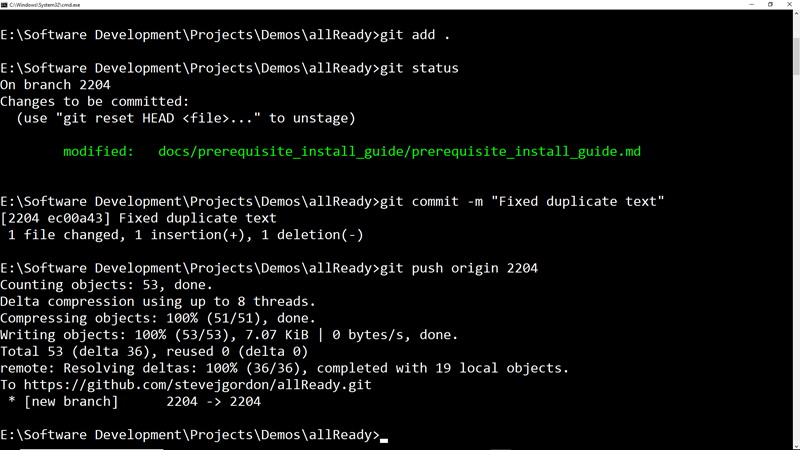
- GIT ADD REMOTE BRANCH TO REPO HOW TO
- GIT ADD REMOTE BRANCH TO REPO PRO
- GIT ADD REMOTE BRANCH TO REPO LICENSE
- GIT ADD REMOTE BRANCH TO REPO SERIES
You can add an individual file or groups of files to git tracking.
GIT ADD REMOTE BRANCH TO REPO PRO
Source: Maxwell Joseph, adapted from Pro Git by Chacon and Straub (2014). Modified files are staged using git add, and following a commit, all files in the staging area are snapshotted and become part of the repository's history, receiving a unique SHA-1 hash identifier. These two commands make up the bulk of many workflows that use git for version control. If you want to push to the new repo without all the history of the existing repo, then you can create new orphan type branch which does not record previous history.

To keep track of this change to this file, you need to The output from git status indicates that you have modified the file README.md. No changes added to commit (use "git add" and/or "git commit -a") " to discard changes in working directory)

Your branch is up-to-date with 'origin/master'. Note that here we are using a bash command - cd (change directory).įor example, on a Unix based system, if you wanted to have your repository in your Documents folder, you change directories as follows: Next, on your local machine, open your bash shell and change your current working directory to the location where you would like to clone your repository. From your repository page on GitHub, click the green button labeled Clone or download, and in the “Clone with HTTPs” section, copy the URL for your repository. Next, clone your newly created repository from GitHub to your local computer. git status, git clone, etc)Ĭlone your repository to your local machine Git specific commands will always started with a call to git (e.g. Git commands: These are commands that are specific to git and will only be available if you have git installed on your computer. They allow you to navigate around your computer, explore directory structures, create and manipulate files and directories, and more. There are 2 types of commands that you will useīash commands: These are commands that are native to bash / shell.
GIT ADD REMOTE BRANCH TO REPO SERIES
GIT ADD REMOTE BRANCH TO REPO LICENSE

But here's a brief explanation: such a tracking relationship makes any future "push" and "pull" operations very easy.
GIT ADD REMOTE BRANCH TO REPO HOW TO
The article " How to Set Upstream Branch in Git" explains this in detail. Please mind the "-u" option: it establishes a "tracking relationship" between the existing local and the new remote branch. Now, with the correct local branch checked out, you can publish it on a remote repository - thereby "creating" it on that remote: $ git push -u origin (2) Push the Local Branch to the Remote Repository If such a local branch doesn't yet exist, you can easily create it: # To create a new local branch. If you already have such a local branch at hand, you can simply check it out: $ git checkout As already said, creating a remote branch actually starts on the opposite end: in your local Git repository! You need to make sure you have a local branch that represents a state you want to push to the remote.


 0 kommentar(er)
0 kommentar(er)
